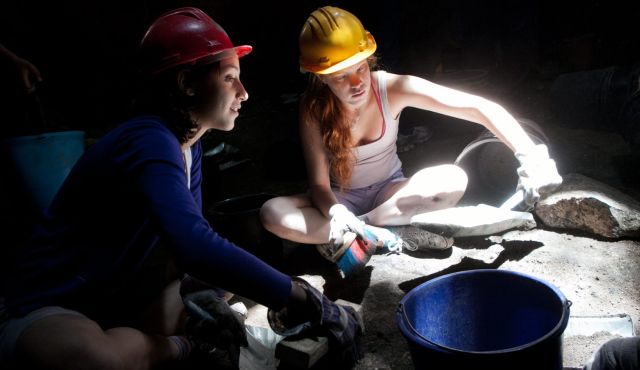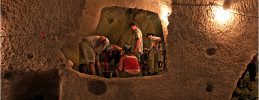Archeological Dig Activity
May 19th 2013
 Does your ideal visit to Israel include some hands-on activities to keep all the members of your family or group engaged? If so, you may do well to consider including the Dig for a Day program. Managed under the auspices of the Archaeological Seminars Institute, Dig for a Day offers a taste of many of the everyday tasks of professional archaeologists, such as digging and sifting through material that has been unearthed at the site, with the goal of identifying artifacts of significance (for example, pottery shards and bones). Volunteer diggers can’t keep anything of archaeological interest, of course, but there might be a chance to take home scientifically inconsequential fragments with the permission of your guide.
Does your ideal visit to Israel include some hands-on activities to keep all the members of your family or group engaged? If so, you may do well to consider including the Dig for a Day program. Managed under the auspices of the Archaeological Seminars Institute, Dig for a Day offers a taste of many of the everyday tasks of professional archaeologists, such as digging and sifting through material that has been unearthed at the site, with the goal of identifying artifacts of significance (for example, pottery shards and bones). Volunteer diggers can’t keep anything of archaeological interest, of course, but there might be a chance to take home scientifically inconsequential fragments with the permission of your guide.
Designed for visitors of all ages, the Dig for a Day program brings tourists to a working archaeological dig at Tel Maresha in the Beit Guvrin National Park, located in central Israel, near the historic home of King Herod. The area includes ruins of the ancient city Maresha, mentioned in the biblical book of Joshua as an important city during the 410-year period that the First Temple stood, as well as remains that date from the later Hellenistic period during the time of the Second Temple.
The program includes a tour of the Beit Guvrin National Park with its massive caves, where it’s possible to observe evidence of comparatively advanced society, such as olive oil production, water cisterns and public baths. Visitors here often report major excitement over climbing inside the huge caverns and seeing burial chambers, underground temples and dovecotes. (Don’t forget to ask your guide where the term “pigeonhole” comes from.) When you tour with the Dig for a Day program, you’ll also have the opportunity to embark on a crawl through unexcavated caves.
The Dig for a Day program has been in operation for over a decade, allowing thousands of tourists from all over the world to participate. The program lasts for three hours, and it’s generally divided into an hour of actual digging and two hours of touring and understanding the significance of the site. It’s ideal for those who willing are to get their hands dirty and want some practical experience digging at a working archaeological site on a condensed timetable.












